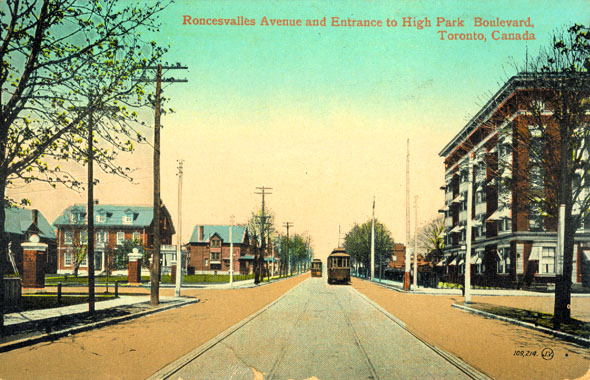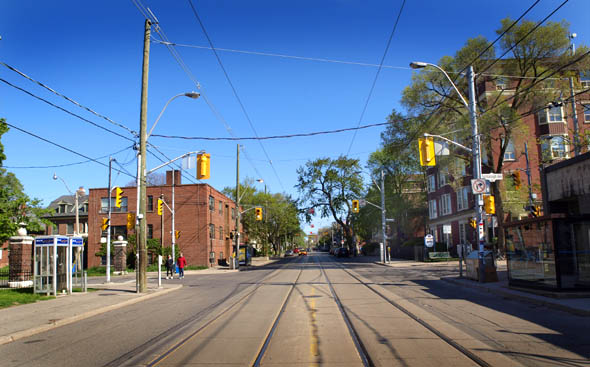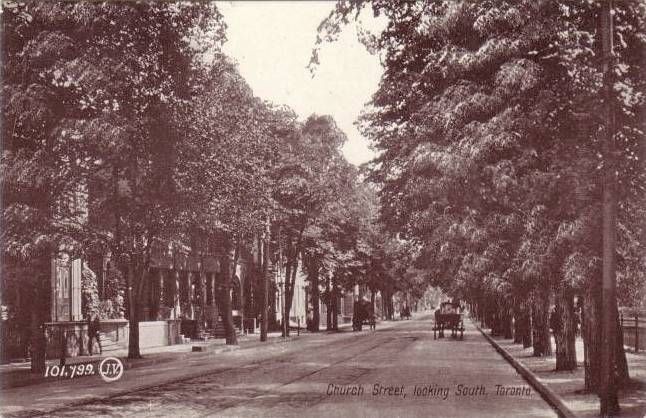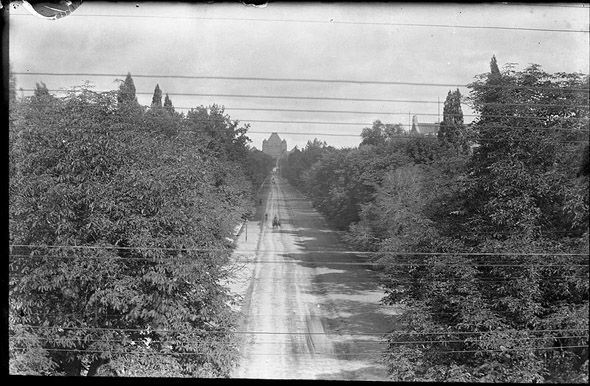I'd like to see the city get bold about this.
A number of the main walking streets downtown would be improved by being narrowed by one full traffic lane on each side. Half the width of each reclaimed lane could be allotted to tree space, and half to a bike lane. It would do away with those horrid root coffins, and allow mature, substantial trees to flourish. To be realistic, this would require a heady jump in transit expansion. Which means it does not seem too realistic, right now. Nonetheless...
North to South, Yonge, Church, Bathurst and Dufferin would be impressive contenders. Church allows curbside parking, so narrowing it would be practically the easiest and most easily understood.
Yonge would probably be the trickiest, because of the subway immediately beneath it. It has also never been a treed street. I think if it were tree lined,though, people would wonder how they did without it so long. It would help turn the street from a tight chute for traffic into a civic asset.
Bathurst has some really stark stretches to it, as does Dufferin. Some heavy planting would improve those a lot.
Church Street, around the turn to the 20th Century:
University used to be lined with mature chestnut trees. I say bring 'em back.
East to West, Queen would be the best contender. Dundas, too. It gets barren both east and west of the immediate core and could use some real beautifying. It's a major surface transit thoroughfare, a walkable neighbourly street and an important link, all in one. Also, The Danforth. I think the suggestion of treeing Front is a good one, too.
Something like this would mark a sharp, though only partial, diverging from the auto-heavy planning setup we're still dealing with. Out of all the main streets in the downtown, it would not affect too many. In that way, it would still be largely symbolic. But a potent symbol - even mentioning it would cause screams of protest. It would definitely push the current shape of compromise between people and the automobile towards the 'people' end. But it would be bold.
People think "oh, we can't do that". But yes, we could if we wanted to. We can do whatever we like.
Personally, I'd like to see something impressive and beautiful, instead of the same old middling same old.
I'd like to see Toronto have the Moxie to try something like this. Even if it was, say, just downtown Yonge. Especially under the nose of this crude mayoralty. That would be a real accomplishment.










